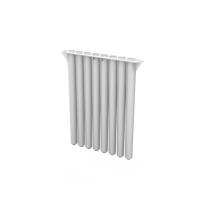Z-Scan Fluorescence Correlation Spectroscopy as a Tool for Diffusion Measurements in Planar Lipid Membranes
互联网
互联网
相关产品推荐

Roche 7345585001 MagNA Pure 24 Tip Park/Piercing Tool
¥820

Dialysis Membranes/Dialysis Membranes;MD1425-5m-
¥300

Recombinant-Cation-diffusion-facilitator-family-protein-1cdf-1Cation diffusion facilitator family protein 1
¥13762

Recombinant-Arabidopsis-thaliana-Lipid-phosphate-phosphatase-2LPP2Lipid phosphate phosphatase 2; AtLPP2 EC= 3.1.3.- Alternative name(s): Phosphatidic acid phosphatase 2; AtPAP2 Prenyl diphosphate phosphatase
¥11354

ZSCAN1/ZSCAN1蛋白Recombinant Human Zinc finger and SCAN domain-containing protein 1 (ZSCAN1)重组蛋白/蛋白
¥3168
相关问答

